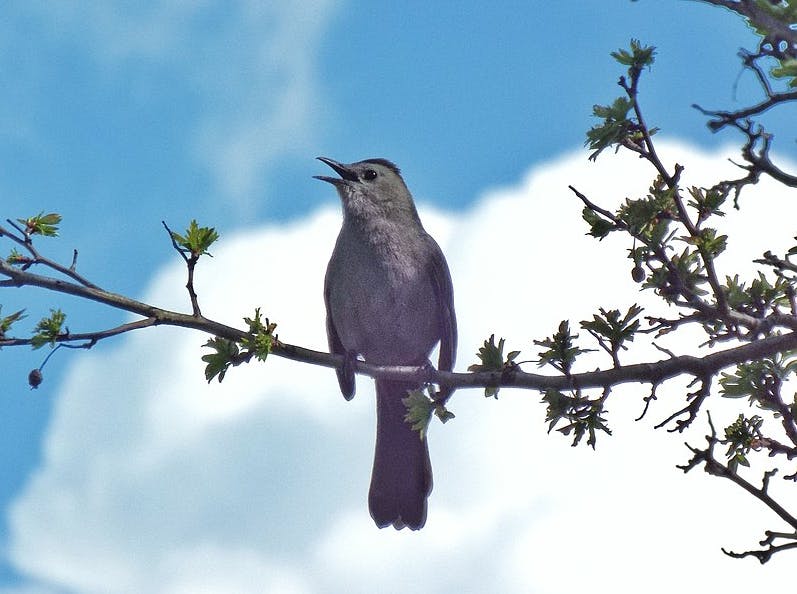Poem of the Day: ‘Extinction of Silence’
Today the American classicist, translator, and poet A.E. Stallings officially becomes the 47th Oxford Professor of Poetry.

Today the American classicist, translator, and poet A.E. Stallings (b. 1968) officially becomes the 47th Oxford Professor of Poetry. This academic appointment, established in 1708, has been occupied by Matthew Arnold (1822–1888), whose famous “Dover Beach” appeared here recently — along with Cecil Day-Lewis (1904–1972), W.H. Auden (1907–1973), Seamus Heaney (1939–2013), and Geoffrey Hill (1932–2016), not to mention the less-remembered father-son pair, Thomas Warton the Elder (1688–1745) and the Younger (1728–1790), who held the post in its earliest days. Stallings follows the British poet Alice Oswald (b. 1966), the first woman to fulfill the appointment, whose term ended in the spring.
As you can see in “Another Lullaby for Insomniacs,” a Stallings poem we ran here in The New York Sun this past winter, her bent as a poet resembles that of Robert Frost in many ways. Among Frost’s gifts, in addition to a preternatural facility for classical meters, was a talent for making something subtle, complex, and intricately constructed appear natural, even simple: the sort of thing any of us might have thought of, except that we didn’t.
Witness Frost’s impeccable hendecasyllabics in “For Once, Then, Something,” which appeared as Poem of the Day last September — those hendecasyllabics which sound effortless, even offhand, as he describes a simple compulsion, to look down into wells to see what’s at the bottom. Witness, too, how that boyish compulsion becomes a figure for the chanciness of human perception, a question about what is real and what isn’t and how much we can trust ourselves to know the difference.
Stallings’s “Extinction of Silence,” which we offer today in celebration of her installation at Oxford, shares with Frost’s poem the same qualities of subtle complexity and unassuming largeness of vision. On the level of form, it’s a sonnet that shies from outing itself obviously as a sonnet. Its three abba quatrains are broken into seemingly unrhymed pentameter couplets. Only the closing couplet clicks shut on an exact rhyme.
The effect of this division of quatrains is to let in more white space — more, in fact, of what the poem is about, more of what is supposedly extinct, although how do we know? We can’t prove a negative. We can’t record the song of silence. We can’t report what’s “not seen, not heard.” Of course, these failures of our conscious striving, all these blanks and unknowns, are nothing if not silences.
That thing whose death we mourn appears to us everywhere, the instant we pause for breath. The poem deploring an extinction becomes, in its quiet, exacting irony, a declaration — we might have thought of it ourselves, except that we didn’t— that there’s something in the world, actually, that we can’t kill.
Extinction of Silence
by A.E. Stallings
That it was shy when alive goes without saying.
We know it vanished at the sound of voices
Or footsteps. It took wing at the slightest noises,
Though it could be approached by someone praying.
We have no recordings of it, though of course
In the basement of the Museum, we have some stuffed
Moth-eaten specimens — the Lesser Ruffed
And Yellow Spotted — filed in narrow drawers.
But its song is lost. If it was related to
A species of Quiet, or of another feather,
No researcher can know. Not even whether
A breeding pair still nests deep in the bayou,
Where legend has it some once common bird
Decades ago was first not seen, not heard.
___________________________________________
With “Poem of the Day,” The New York Sun offers a daily portion of verse selected by Joseph Bottum with the help of the North Carolina poet Sally Thomas, the Sun’s associate poetry editor. Tied to the day, or the season, or just individual taste, the poems are drawn from the deep traditions of English verse: the great work of the past and the living poets who keep those traditions alive. The goal is always to show that poetry can still serve as a delight to the ear, an instruction to the mind, and a tonic for the soul.
